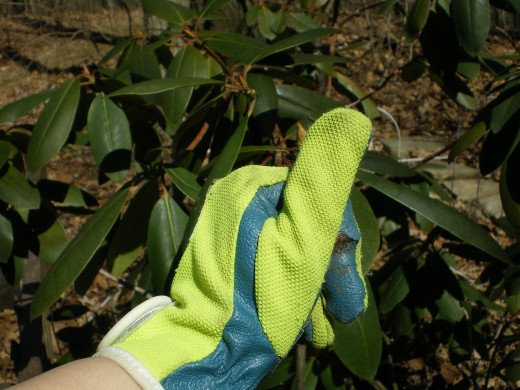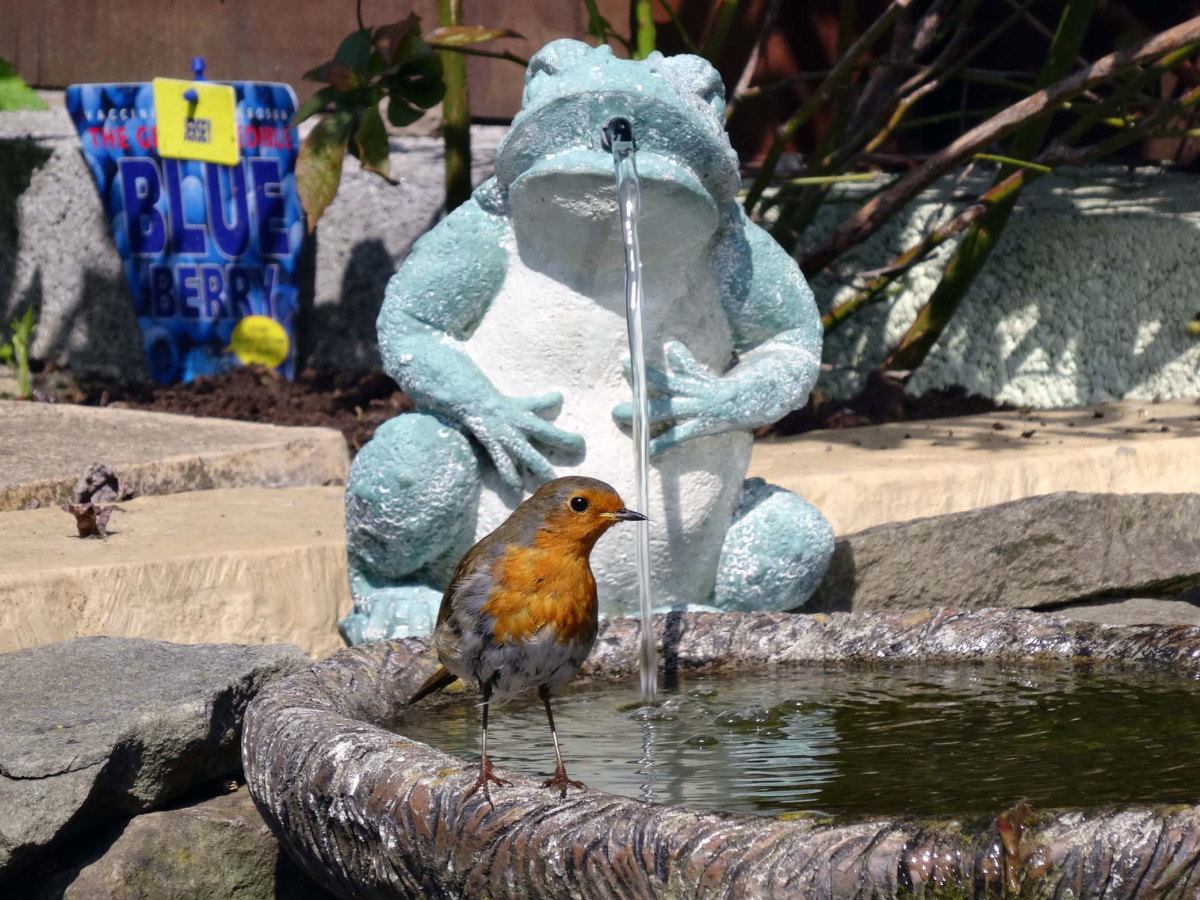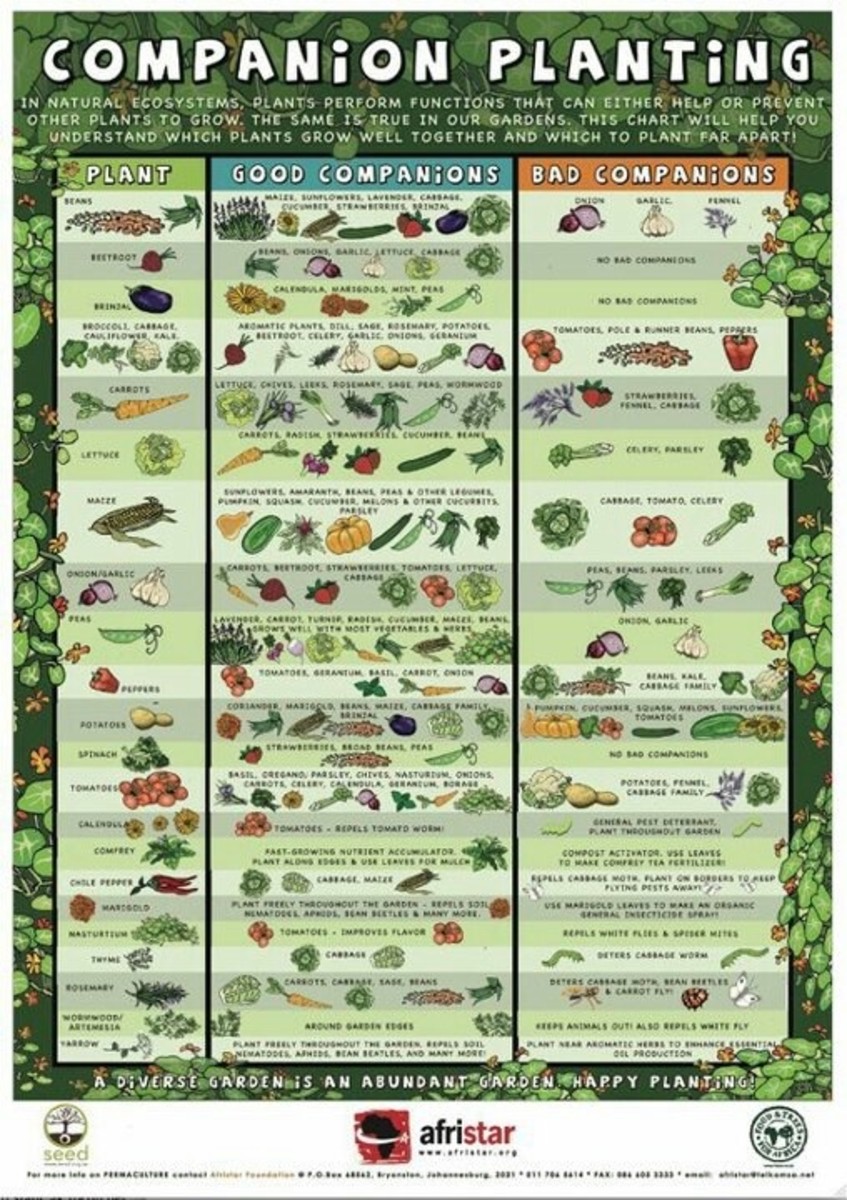Do You Suffer From Brown Thumb Syndrome? You Can Be Cured!
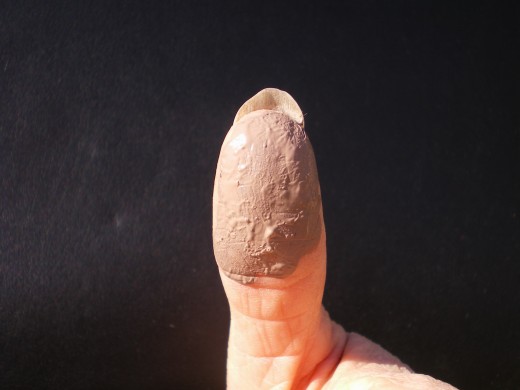
Do you take plants home with you only to have them die as soon as your back is turned? Have you ever resorted to 'camo netting' to hide your 'garden' from the neighbors? Then I am sorry to say you definitely have brown thumb syndrome.
It's a nasty disease that sadly most people think they are doomed to live with.
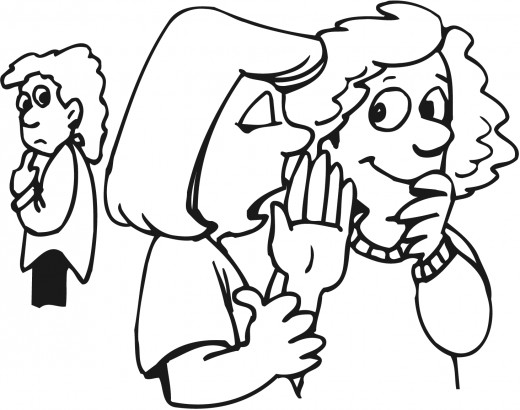
There’s such a stigma attached to it. You hear people whispering as they pass by your wilted, pathetic flower garden: “Poor dear, she has ’brown thumb syndrome’ you know, and her garden is terminal”. You’ve seen those sympathetic looks, haven’t you.
And yet you continue to try to overcome your brown thumb. A beautifully-illustrated garden catalog comes in the mail. Your first instinct is to toss it into the recycle bin. Flashbacks to embarrassing garden failures flood your brain. But those gorgeous hydrangeas on the cover beckon. What colors! Look at all those flowers. Those are ginormous plants!
You quickly find the description on the first page--how convenient. It states clearly ’easy to grow, carefree, flowers profusely all summer in full sun.’ Well that’s it, you’re hooked again! Ignoring your unfortunate disease you place your order excitedly, and anxiously await it’s arrival. The order confirmation comes, along with the following statement: Your order will arrive ’at the proper planting time for your region’.
You say to yourself: Okay, so I’ve got a month or two. I can wait. No problem. I’ve still got that bare spot where last year’s garden didn’t do so well. (A gross understatement--denial is a major brown thumb symptom). That’s the perfect place for my new plants. Never mind that it’s under a big tree with little sun. It’s a plant, right, and plants grow all over the place; sun or shade. I’m sure they will be fine there. Anyway, that spot needs some color.

Brown Thumb Syndrome strikes again! I know because I am a ’brown thumb syndrome’ survivor. There are remedies I can prescribe that will rid you of your disease once and for all. Here are my recommendations:
- Buy a Soil Test Meter. These handy-dandy little gadgets cost less than $20.00 at your local big box hardware store/garden center,nursery, or online. This small investment will help you to a speedy recovery!
- Study the Plant's Tag or Catalog Description. Follow its guidelines to the letter. That information is priceless to a 'brown-thumber'. It's there to help you get your syndrome under control.
- If you buy your plants locally, avoid those that have yellow or wilted leaves. Also, don't be lured by plants that are in full bloom, because that means they are now at their peak. And pass up those that have roots coming out of the bottom of the pot.
- Strive to give your plants the very best fine-dining experience they could possibly have. That means a good organic soil mix and organic time-release fertilizer.
Your plants will thrive and you will be cured if you provide them with the necessities: good nutritious food (organic soil), vitamins and minerals (fertilizer), just the right amount of sunshine, room to grow big and strong, and water.
Which Kind of Gardener Are You?
Soil Test Meter
The soil into which you plop your plant material is the single most important factor in determining success or failure. I used to think that all I had to do was buy the plant, dig the hole, stuff it in and wait for it to do its thing. You see I had an acute case of Brown Thumb Syndrome.
It is vital that you know your soil’s ph level. That’s where the soil test meter comes in very handy. It will also measure your garden’s moisture level, it’s light level (also of paramount importance), as well as the ph level. The ideal ph level for most plants is between 6.5 and 7.0. If it is lower than 6.5, you have acidic soil. Higher than 7.0 indicates alkaline soil.
Correct acid soil by adding horticultural lime. The package will specify how much you need for the size of your garden. Neutralize alkaline soil by using organic fertilizer. In fact, the use of compost will take care of most soil problems automatically.
Some sources suggest using garden sulfur to neutralize alkaline soil. However, sulfur becomes sulfuric acid and kills important soil fungi. The fungi are responsible for releasing the nutrients in your soil and making them easily available for your flowers and veggies.
Soil Test Meters
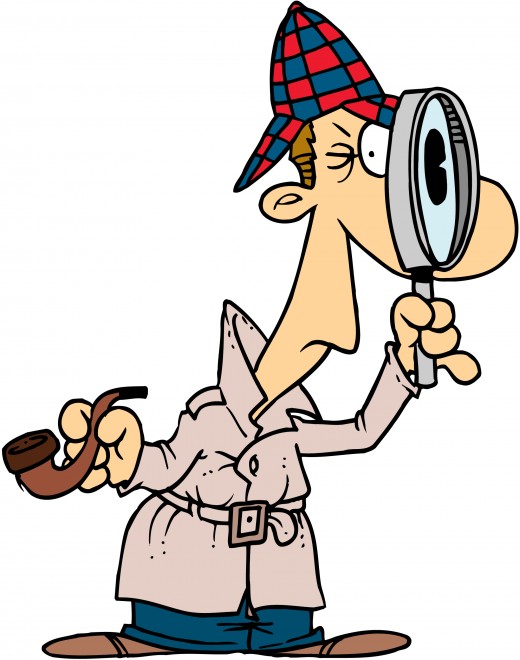
Weed Detective says: if you have creeping buttercup, sorrel, nettles or burdocks as I have, then your soil is too acid. This is easily cured by adding a small amount of horticultural lime to 'sweeten' your soil.
Organic Soil Mixture
Your local nursery, garden center or online source can provide you with organic garden soil mix. Or you can make your own and store it in a clean trash can with a lid. The basic soil mix I use consists of the following:
- 1 bucket of peat moss
- 1 bucket of perlite
- ½ bucket aged cow manure
- 2 cups of organic fertilizer (you can also use a fertilizer spike-one per plant)
- 2 cups of horticultural sand
- ½ cup of lime to balance the acid of the peat moss
Mix thoroughly. To make enough for a large flower or vegetable garden bed, you will of course need to buy and use larger quantities. All of the ingredients are available in large bags at the local garden center. I recommend mixing it in batches in a wheelbarrow before adding to your existing garden bed.
Organic components are much more easily absorbed and used by your flowers and vegetables. In addition, this type of soil actually builds any existing soil you have. It’s like feeding your plants with a vitamin and mineral boost. The organisms in the soil multiply at a healthy rate. These microbes help to break down organic materials into usable form, thus continuously feeding your garden a rich, nutritious and easily digested meal.
Organic Fertilizer
Organic fertilizer can be purchased at your local garden center or online. Alkaline soil is easily fixed by adding organic fertilizer. If you want to make your own fertilizer you need the following ingredients:
- 3 parts alfalfa seed meal (available online at Amazon and elsewhere)
- 1 part blood meal (available at Lowe’s or Home Depot or online)
- 1 part dolomite lime (available at Lowe's or Home Depot or online)
- ½ part kelp meal (available online at Amazon and elsewhere)
Add all above ingredients to a garden tub or wheelbarrow. Mix thoroughly and use as follows:
Scoop out approximately one cup or so of soil from your planting hole; add approx. ¾ cup of organic fertilizer to the bottom of the hole and mix with your existing soil. Mixing ensures that the plant’s roots will receive the fertilizer gradually. Then add back the rest of the soil you scooped out along with your flower or veggie plant. Water thoroughly.
I found the above fertilizer recipe a few years ago online at the Territorial Seed Co. and have been using it ever since. Your success will continue if you add organic materials to your garden every year. That includes compost and/or organic fertilizer.
Light Requirements
Pay close attention to that flower tag or catalog description when it comes to lighting. If your chosen plant needs full sun, it will perform at its best if it receives direct sunlight. Use your 3-in-1 soil test meter to see just how much sun your proposed garden spot receives in a day. Then use that information to choose the right plant material for your garden location.
Full sun = 6 to 8 hours per day (water regularly in hot weather)
Part sun = 4 to 6 hours per day
Part shade = 3 to 6 hours with morning sun and afternoon shade, or east-facing.
Dappled sun = sunshine that is filtered through the leaves of a tree
Full shade = less than 3 hours of sun (must be exposed to some sunlight-does not mean ‘no sunshine at all’)
Plant Spacing Requirements
The tag will also tell you how much room your plant will take up at maturity. Be sure not to crowd plantings too closely together. Your garden may look very sparse to you at first, but will quickly fill in. This way each plant will have enough nutrients for optimum growth and flower or veggie production.
You will also see in the description how tall it will be when fully grown. This is helpful when making your overall garden plan. It is best to place the tallest plants in the back of your garden so they do not shade lower-growing flowers. Use the tag information to see which plants will work in the middle part and the front of your vegetable or flower garden as well. This allows for everybody to get their fair share of the sunshine they require!
Moisture Requirements
Moisture requirements are included for your plants, too. Don’t make the mistake of ignoring this information. If a flower needs to be in well-drained soil, avoid planting it in a low-lying area that stays moist; and vice versa. Unless the flower likes wet feet, it will not be happy in a soggy environment. Conversely, placing a bog plant in a dry environment will surely lead to a relapse of your Brown Thumb Syndrome. Use your 3-in-1 Soil Test Meter to determine how much moisture is in the soil where you wish to place your plants.
Do not use toxic pesticides. If you use organic soil and organic fertilizer, you will have a lot fewer bad bugs to worry about anyway. Natural controls including good bugs that eat bad ones, and your backyard birds will take care of the majority of pests for you automatically. That is only one of the many perks of organic gardening.
Natural Pest Control
For the sake of your garden, be brave and hand pick those few bugs that you find. Armed with a small bucket of soapy water, and rubber gloves for the squeamish, pluck the pest and plop into the water. There are many sources for identifying both good and bad garden bugs. You’ll want to leave the good ones alone and do away with the rest.
Organic Bug Control
Remember that no garden is always perfect all of the time. Adhere to the specific plant requirements, use organic materials, water regularly and buy a journal for taking notes about your garden. You will gain confidence as you see what works and what doesn’t. Even master gardeners don’t get it right all of the time. They experiment often. Before shopping for more plants, be sure to re-read your journal to avoid repeating past mistakes.
- fellow hubber Kathryn Vercillo suggests 3 plants to buy when you've got a brown thumb.
I wish you a full and speedy recovery from your Brown Thumb Syndrome!
